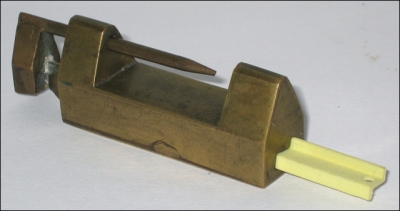3D printing! It's big, it's exciting, and it's fun! It's so important that Microsoft made being 3D printing compatible a high priority for Windows 8.1. This book will help you get started in using Blender to make objects specifically for 3D printing. We will not recommend any particular printer or printing service. If you already have a 3D printer, you will know what you need to do for printing. If not, you'll probably be depending on someone else to do the actual printing and you'll need to know what they need from you, and what you need to keep in mind as you model in Blender.
In this chapter, we will look into general issues affecting 3D printing and give you a little background on what is going on so you understand why you may have to do things differently to make an object in Blender for 3D printing than you do for animation or a game engine.
The following are the topics we'll be covering in this chapter:
- Opportunities to use your 3D printer
- How a 3D printer works
- Modeling dimensions, tolerances, and file sizes
- Controlling printing costs
- What materials can I use in 3D printing?
- What types of printers are there?
- A tour of a 3D printing service
3D printing is not the correct way to make everything. If you need to make a lot of copies of an object, 3D printing is too slow. 3D printing is also expensive. You have a limited choice of materials. You have limits on the size of objects and the quality of the objects you can make.
For example, think about making a bicycle completely with 3D printing. While I am writing this, it's impossible. The tires alone are impossible, with rubber, thread, and steel cords; the process is too complex for today's 3D printers. The size of the bike frame is still too large for almost all 3D printers; carbon fiber frames cannot be printed directly, titanium frames are very expensive, and the quality of steel you would be able to use in a 3D printer may not be right for a durable bike.
At the same time, you could easily make custom lugs to hold the frame together, custom light mounts, shifters, and water bottle racks. 3D printing can be used to create the mold for carbon fiber lugs or even a mold for a carbon fiber frame.
3D printing is best used for making prototypes and custom objects. As an exercise, I looked around to see what kinds of things I'd want to use 3D printing for. I came up with the following things:
- Water bottle holder for my recumbent bicycle's oval-shaped frame
- A clip that would let me mount my hydration pack to my recumbent bike and hold the hose securely next to my shirt, yet be convenient to move so I can drink from it, and it detaches easily in case of an accident
- Replacement for the plastic table clamp of an old Luxo lamp
- Replacement plastic foot for a camera tripod
- Extension for my mouse to make it large enough for my hand
- 3D-printed business cards
- Z-shaped key for an antique Chinese brass lock that had accidentally got latched, and for which there was no key. As seen in the following image, the new key was simple to make in 3D printing but difficult to make otherwise:

I'm sure that you have your own list. The great part about 3D printers is that they can make any shape you need, and they do it in a reasonable time at a reasonable cost. That's amazingly powerful. Look at the catalogs of the services linked later if you need more ideas.
You may want to use 3D printing as a part of a business. You could make prototypes of mechanical parts and objects architectural or theatrical stage models. You can sell what you make, such as jewelry, fantasy figurines, a smart phone case, custom coffee cups or vases, cookie molds in the shape of a cat, or whatever you think of.
3D printing is just getting started, so there is no telling how far it will go. A company named Made in Space is designing a 3D printer for use in zero gravity. They see that it will be far more efficient for many space-based repairs to just make parts up there, rather than having to carry a large number of spare parts into orbit. The OpenLuna Foundation is using 3D printing to build a model of their proposed lunar lander to show potential investors. Being able to touch and hold something is a powerful influencer in making a sale:

